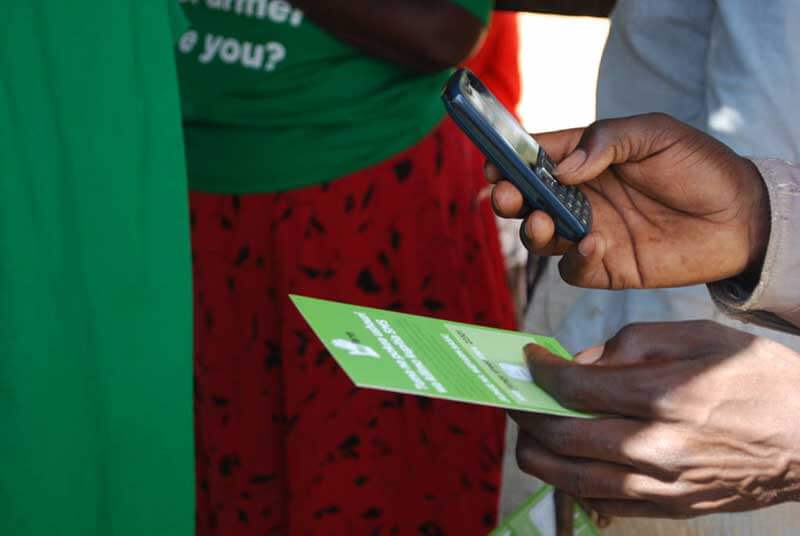- WeFarm: a simple text message may help end hunger
- CRISPR gene editing and Mbegu Choice are bringing new seeds to farmers
- Vertical farming is an agricultural revolution in the making
The world is hungry, and it’s adding mouths to feed every day. Conservative estimates suggest that we’ll need to produce 70 per cent more food by 2050, and 800 million people already feel the pains of hunger. As that number swells over the next few decades, our best hope is innovative technology.
Famine is a complex issue. Much of the world’s food – as much as 70 per cent – is grown on small plots of land of about 8,000 square metres. These are typically farmed by multi-generational smallholders who lack high-tech gadgets, fertilisers, or pesticides. And unfortunately, many of them make their homes in environments vulnerable to drought, desertification, and disease.
But some pretty simple tech may help them increase their productivity, boost yields, and feed more people. We’d like to discuss some of these agricultural wonders, and give you a better sense of how we’ll fight hunger in the future.
WeFarm: a simple text message may help end hunger
Smartphones may not seem like a revolution, but their power to fight famine is incredible. Africa has a mobile penetration rate of about 80 per cent, meaning that close to a billion people have access to text and calling. And as mobile internet increasingly reaches people on the continent, some amazing possibilities are developing.

Consider that farming know-how is traditionally passed by word-of-mouth. If no one in your community has faced your particular problem before – say, a new pest or a change in climate – you’d be out of luck. But now that nearly everyone has access to a mobile, help is only one text away. Enter WeFarm, a social media app aimed at small farmers. As Meera Senthilingam reports for CNN, the idea is genius. When a farmer sees a problem, they just send a text question about it to the WeFarm system. This query is then processed and sent to members who might be able to help. Ideally, an answer is ready in minutes.
Currently being tested in Uganda, Kenya, and Peru, the WeFarm network taps local knowledge and intergenerational wisdom. As Mwinyi Bwika, the company’s head of user acquisition in Kenya, explains, “Information is at the core of everything we do … Our farmers have information and knowledge that would benefit other farmers within the network. … (They) learned how to farm from their parents … and their parents learned from their parents. … (We) can tap into this generational knowledge.”
CRISPR gene editing and Mbegu Choice are bringing new seeds to farmers
CRISPR is nothing new, but the gene editing DNA sequences harvested from bacteria are transforming the fight against hunger. Many believe that genetically modified foods are suspect, but scientists the world over have asserted that they’re safe. And despite the controversy that still surrounds GMOs, what they can do is pretty amazing. For instance, a team from the University of Cape Town in South Africa is using genes from Myrothamnus flabellifolius, a non-edible plant native to the region, to impart its drought resistance to Eragrostis tef, also known as teff, a grain popular throughout Africa, but especially in Ethiopia, where it’s used to make injera flatbread. Super-drought resistant teff can guarantee that people don’t starve when the rains simply won’t come as expected.
But as cool as CRISPR is, getting these new seeds to rural farmers is key. Mbegu Choice, “seed choice” if you speak Swahili, is aimed at getting farmers to try new seeds. Essentially an app that accesses a vast database, farmers need only tell Mbegu Choice about their climate and soil, and it can recommend a range of crops for them to grow. Aline O’Connor, who directed the effort to develop the app, says: “We’re trying to get farmers to look at newer seeds … It’s like a software upgrade. They’re better.”
Vertical farming is an agricultural revolution in the making
Increased urbanisation is following population growth closely, and as more people pack themselves into urban centres, rural farming isn’t a great option. That’s because, in addition to the problems of pests, droughts, and diseases, it costs tremendous energy to transport food from a green exurb to major cities where people live.
An innovative approach to growing food in urban areas is vertical farming, in which crops are housed indoors in stacked trays. Using either hydroponics or aeroponics, the plants are provided everything they need to grow by a nutrient-rich supply of water. This has huge advantages.
First, these watering systems use only 10 to 16 per cent of the water of conventional irrigation. In drought-stricken areas, where water is already a scarce commodity, that’s huge. Second, powerful LEDs are used to provide ‘sunlight’, and these can be kept on 24 hours a day, providing ideal growing conditions year-round. Third, these vertical farms have tiny geographic footprints, allowing even the largest of cities to grow tonnes of food in a very small area. Imagine converting one or two high-rises per city into massive farms, and you get the idea. But best yet, because the farming is local, so is the supply of food, avoiding wasteful food miles and the catastrophic over-use of fossil fuels.
Hunger is a serious issue and a growing problem. Especially in marginal areas for agriculture, where much of the world’s population now lives and farms, technology is a promising solution to a pressing issue. And while things like smartphones and apps seem like yesterday’s tech, they’re ensuring that billions of people have a future.
Share via:


